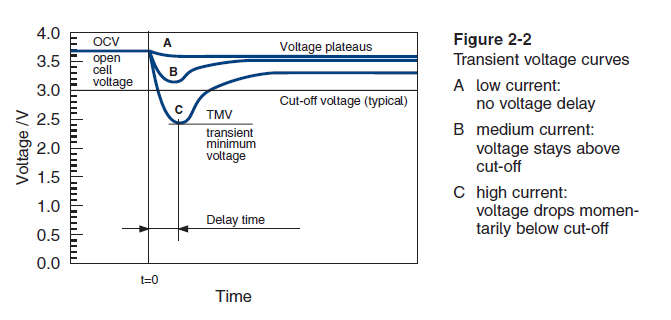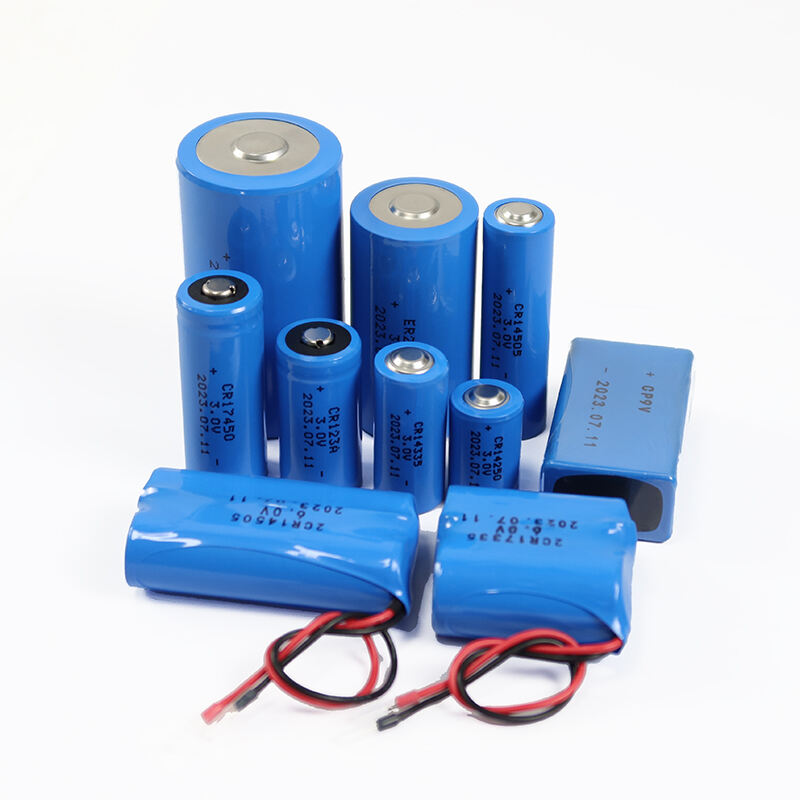Nachrichten
Anweisungen und Vorsichtsmaßnahmen für die Verwendung von Lithium-Thionylchlorid-Batterien
Lithium-Batterien mit einer Modellnummer, die mit ER beginnt, sind Lithium-Thionylchlorid (Li/SOCl2)-Batterien, die gemäß internationalen Batteriestandards als Lithium-Primärbatterien klassifiziert werden. Lithium-Primärbatterien sind eine neue Art von Hochenergie- und umweltfreundlichen Batterien mit Lithiummetall als negativer Elektrode. Sie sind nicht wiederaufladbare Batterien.
1. Lithium-Primärbatterien sind nicht wiederaufladbar
Das direkte Laden von Lithium-Primärbatterien führt dazu, dass die Batterie explodiert. Die Wahrscheinlichkeit einer Batterieexplosion steht in direktem Zusammenhang mit der Ladezeit und dem Strom. 220V-Ladung wird sofort explodieren. Bei 12V-Gleichstromladung wird die Batterie innerhalb weniger Minuten explodieren. Bei 5V-Gleichstromladung ohne externe Schutzkomponenten kann ein Ladestrom von etwa 50mA erreicht werden, und die Batterie wird nach einigen Stunden explodieren.
Im Fall einer 5V-Spannungsschwebeladung im Schaltkreis wird empfohlen, dass Kunden Dioden und andere Schutzmaßnahmen im Schaltkreis hinzufügen, um den Ladestrom unter 10µA zu halten.
Es ist sicher, den Ladestrom von Lithium-Primärbatterien unter 10µA zu halten.
2. Zwangsentladung verhindern
Wenn mehrere Batterien in Reihe geschaltet werden, können bei Verwendung anderer Modelle oder gebrauchter Batterien in der Reihenschaltung einige Batterien eine erzwungene Entladung (Überentladung) erfahren. Aufgrund der Ungleichmäßigkeit der Batteriekapazität werden einige Batterien in der späteren Phase der Entladung aufgeladen, was zu Batterieunfällen führen kann.
Um das Auftreten von Aufladung zu verhindern, wird den Kunden geraten, keine Batterien zur Verwendung zusammenzubauen.
Wenn Sie eine einzelne Batterie in Kombination verwenden möchten, wenden Sie sich bitte an die Techniker, die Ihnen Montage-Lösungen und Montagedesign-Dienste anbieten werden.
3. Hohe Temperatur
Wenn die Umgebungstemperatur der Lithium-Einweg-Batterie 100 °C überschreitet, wird die Batterie explodieren, daher sollten Sie darauf achten, die Schweißzeit und -temperatur während des Schweißens zu kontrollieren.
4. Hysterese und Punkte der Aufmerksamkeit
Als mit einem Gehalt an Kohlenwasserstoffen von mehr als 0,5% haben eine Eigenschaft, das heißt, Spannungshysterese, die oft dazu führt, dass Kunden die Batterie verwenden, um hohe Ströme bereitzustellen, und die Lastspannung unter die minimale Grenzspannung des Kunden fällt, was dazu führt, dass die Geräte schlecht laufen. In Anbetracht der Tatsache, dass viele Kunden dies unterschätzen, ist es notwendig, dass wir die Hystereseleistung der Batterie im Detail erklären.

Klasse A: Unter Niedrigstrombedingungen, obwohl die Batterie passiviert ist, wird sich die Last bei der Verwendung nicht signifikant ändern. Am Beispiel der ER14250, wenn der Strom unter 1mA liegt, wird die Batterie keine offensichtliche Hysterese (Spannungsreduktion) aufweisen.
Kategorie B: Unter Mittelstrombedingungen, wenn die Batterie passiviert ist, kann die Batterielast jedoch weiterhin über der Abschaltspannung gehalten werden.
Am Beispiel der ER14250-Batterie, wenn der Strom unter 4mA liegt, wird die Spannung der passivierten Batterie sinken, aber im Allgemeinen wird sie nicht unter 2,8V fallen.
Kategorie C: Unter hohen Strombedingungen kann die Batterie, wenn sie passiviert ist, die Last leicht unter die Abschaltspannung fallen lassen, was dazu führt, dass das Gerät nicht richtig funktioniert. Am Beispiel der ER14250-Batterie, wenn der Strom mehr als 10mA erreicht. Wenn passiviert, wird die Last unter die Abschaltspannung (Cut-offVoltage) fallen.
Daher müssen die Kunden das Hysteresephänomen vollständig verstehen und entsprechende Maßnahmen ergreifen, um die Auswirkungen der Hysterese zu reduzieren. Die folgenden Vorschläge werden während der tatsächlichen Nutzung gemacht:
1. Berücksichtigen Sie die Lastgröße, die Umgebung und andere Faktoren in der Entwurfsphase und wählen Sie ein Batteriemodell für den Einsatz unter mittleren oder niedrigen Strombedingungen aus.
2. Die Lagerzeit der fertigen Batterie sollte ein halbes Jahr nicht überschreiten. Es wird empfohlen, die Batterie nach mehr als einem halben Jahr zu aktivieren.
3. Wenn die Batterie im Gerät installiert ist und einen Mikroampere-Stromverbrauch hat, wird das Phänomen der Batteriepassevierung verlangsamt. Es wird jedoch empfohlen, während der Entwurfsphase die Hinzufügung von Kondensatoren in Betracht zu ziehen, wenn der Entwurfsstrom größer ist als der maximale Betriebsstrom der Batterie, um den Spannungsabfall der Batterie zu reduzieren.

V. Vorsichtsmaßnahmen während der Benutzung
1. Kurzschluss ist strengstens verboten, und das Laden mit hohem Strom ist strengstens verboten.
2. Es ist den Benutzern strengstens untersagt, Batterien selbst zu kombinieren.
3. Überentladung, Quetschen und Verbrennen von Batterien sind strengstens verboten.
4. Langfristige Nutzung oder Erwärmung außerhalb des zulässigen Temperaturbereichs ist strengstens verboten (Batterien haben Sicherheitsrisiken, wenn sie 100 °C überschreiten).
5. Überprüfen Sie die äußere Verpackung vor der Verwendung sorgfältig. Wenn die Verpackung beschädigt ist, ermitteln Sie die Ursache und verwenden Sie sie nicht leichtfertig. Wenn die verpackten Batterien verstreut sind, sortieren Sie sie rechtzeitig, versiegeln Sie die verstreuten Batterien und benachrichtigen Sie den Lieferanten.
6. Es ist strengstens verboten, Batterien unterschiedlicher Serien und unterschiedlicher Spezifikationen in Reihe zu mischen und zu verwenden.
7. Das Löten darf nicht willkürlich an der Oberseite der positiven und negativen Pole der Batterie durchgeführt werden, und das Löten am Abziehblech muss innerhalb von 5 Sekunden abgeschlossen sein.
8. Während des Betriebs darf die Batterie nicht verstreut oder fallen gelassen werden, um einen Kurzschluss der Batterie zu vermeiden.
9. Nach dem Entladen der Batterie auf die Endspannung ist es strengstens verboten, sie weiterhin zu verwenden, und die Batterie darf nicht in Wasser eingeweicht werden.
10. Benutzte Batterien sollten rechtzeitig gekennzeichnet und verschrottet werden und dürfen nicht willkürlich gelagert werden.
11. Beim Abisolieren und Löten von Drähten dürfen die positiven und negativen Drähte nicht gleichzeitig abisoliert werden, und die positiven und negativen Drähte dürfen nicht mit metallischen Gegenständen verbunden werden, um einen Kurzschluss der Batterie zu vermeiden.
12. Bei der Verpackung und Lagerung von überschüssigen Batterien von der Produktionslinie sollten die Batterien in der Originalverpackung verpackt, ordentlich angeordnet und nicht kurzgeschlossen sein.
13. Überschüssige Batterien von der Produktionslinie sollten in der Originalverpackung gelagert werden. Es wird empfohlen, die Batterie in einer Umgebung mit einer Temperatur von <25 Grad und einer Luftfeuchtigkeit von <70% zu lagern, um eine langfristige Lagerung in rauen Umgebungen zu vermeiden, die Rost und Korrosion der Batterie verursachen und zu Leckagen führen kann.
14. Anforderungen an die Installation und Nutzung von Batterien: Der Pluspol der Batteriezelle sollte horizontal und nach oben gerichtet sein. Wenn der Pluspol nach unten zeigt, wird ein Teil der Kapazität unbrauchbar, und die tatsächliche Ausnutzungsrate beträgt nur etwa 80% des Normalwerts.
15. Halten Sie die Batterie von Kindern fern, um Verletzungen zu vermeiden.
16. Ausgediente Batterien können nicht von selbst zerstört werden und sollten gemäß den Vorschriften der örtlichen Umweltschutzbehörde behandelt werden.
Die oben genannten sind die Vorsichtsmaßnahmen für die Verwendung und den Betrieb von Lithium-Einwegbatterien, die hiermit erläutert werden.


